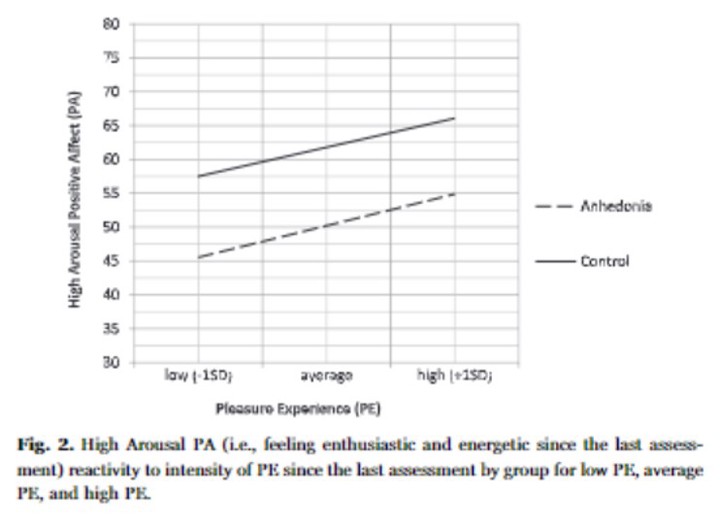Positive affective functioning in anhedonic individuals’ daily life

Anhedonia, the decreased interest and pleasure, is often described as ‘flat’ or ‘blunted’ positive affect (PA). Yet, little is known about PA functioning in anhedonic individuals’ daily lives. The current study investigates PA reactivity to pleasurable experiences in anhedonia together with its relevant temporal dynamics (i.e., variability, instability, and inertia), and expands current knowledge by exploring the role of arousal therein. Methods - Using the Experience Sampling Method (ESM), we collected 90 assessments of real-life PA experiences across 30 days in 18–24 year old individuals with anhedonia (N=69) and without anhedonia (N=69). Results - Multilevel analyses showed that anhedonia was associated with less intense pleasure experience, and lower levels of PA. Contrary to predictions from laboratory research and depression theory, individuals with anhedonia showed more variability and less stability in PA, and no signs of blunted PA reactivity. In fact, when exploring high and low arousal PA, individuals with anhedonia showed a slightly stronger reactivity to pleasurable experiences in high-arousal PA but not low-arousal PA. Limitations - We did not control for previous pleasure experiences and, instead of the last positive event, accumulation of positive events may have determined the change in high-arousal PA. Conclusions - Individuals with anhedonia are likely less ‘flat’ or ‘blunted’ than generally thought. Although replication is warranted, impairments in high-arousal positive emotions may be of particular interest in the clinical treatment of anhedonia.